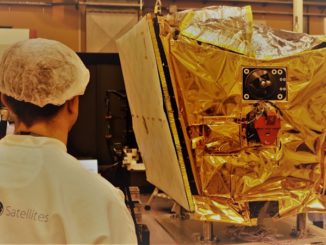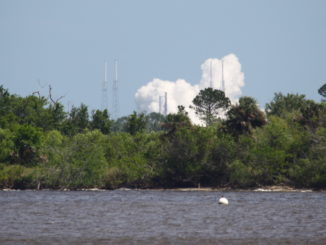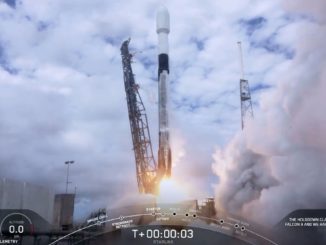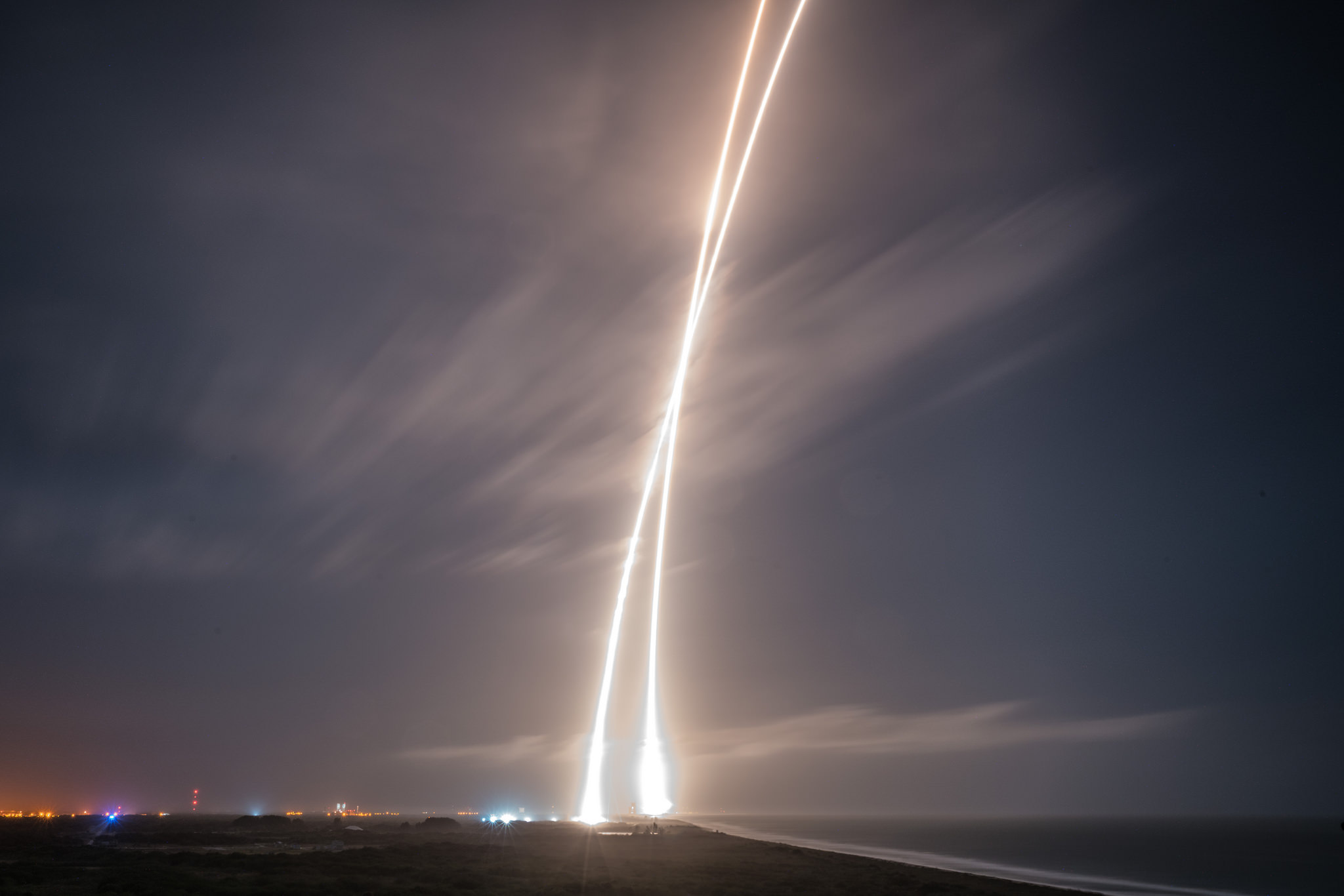
Flying through the sky at supersonic speed, a Falcon 9 rocket stage descended to a historic landing at Cape Canaveral on Monday, returning to the spaceport minutes after boosting 11 Orbcomm communications satellites toward orbit on SpaceX’s first flight since a major failure in June.
Aside from the dramatic touchdown of the 156-foot booster stage and a return to service after a six-month grounding, SpaceX also debuted an upgraded Falcon 9 booster that can haul heavier payloads into orbit and make it easier for the rocket to come back to Earth and be reused.
“(From) everything we’ve seen thus far, the mission appears to be perfect,” said Elon Musk, SpaceX’s billionaire founder and chief executive. “The satellites were deployed right on target and the Falcon 9 booster came back and landed, it looks like, almost dead center in the landing pad. And then the upper stage did a coast and then restarted to prove out the coast and restart capability.”
Spaceflight Now members can read a transcript of a media conference call with Elon Musk after Monday’s historic rocket flight. Become a member today and support our coverage.
The landing achievement, which SpaceX said was a secondary objective on Monday’s mission, is a big step toward proving the Falcon rocket can be reused, a key tenet for Musk’s company’s goal of slashing the costs of space transportation.
The magnitude of the cost reduction could turn the launch market upside down if reusability can be perfected, Musk said.
“The Falcon rocket costs about $60 million to build,” Musk said. “It’s kind of like a big jet, but the cost of the propellant, which is mostly oxygen and the gases, is only about $200,000, so that means that the potential cost reduction over the long term is probably in excess of a factor of 100.”
The visual splendor of the rocket’s fall back to Earth was stunning to experienced launch spectators.
After the Falcon 9’s fiery liftoff from Cape Canaveral’s Complex 40 launch pad at 8:29 p.m. EST Monday (0129 GMT Tuesday), the rocket steered on a trajectory northeast from the launch base, accelerating to nearly 4,000 mph and 50 miles altitude in two-and-a-half minutes.
Then the first stage detached from the Falcon 9’s upper stage, with a nudge from a new pusher separation device flying for the first time on Monday’s launch.
A single Merlin engine lit a few seconds later to propel the upper stage into orbit with the Falcon 9’s Orbcomm passengers.
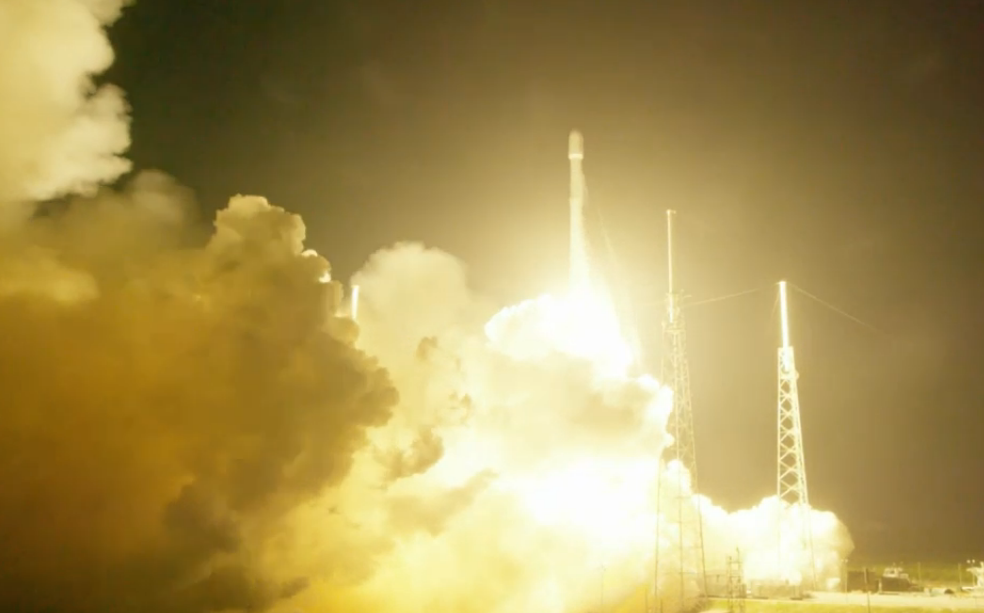
Meanwhile, the first stage booster, which usually falls into the ocean and is discarded, flipped around to point its nose back toward the Florida coastline.
A subset of the first stage’s nine Merlin engines ignited two times to reverse course and slow down for re-entry back into Earth’s atmosphere.
Musk said he was fairly confident in the chances for a smooth landing — he gave about a 60 to 70 percent chance of success — but he knew there was little margin for error.
“There are just so many things that have to go right, and it’s an incredibly complex set of maneuvers that the booster has to make,” Musk told reporters in a conference call shortly after Monday’s flight. “It’s sort of flying away from the pad, in this case at 5,000 kilometers per hour (3,000 mph) … in the wrong direction.
“It has to deploy the upper stage, do a U-turn, contain the propellant without centrifuging … It has to be done quite rapidly, and then restart to boost back, in this case in a ballistic arc to Cape Canaveral, which was quite a scary maneuver, and then deploy the hypersonic grid fins, maneuver through hypersonic, supersonic to subsonic, and finally light the engine for landing.”
Around nine minutes after liftoff, just as the Falcon 9 upper stage neared orbital velocity off the U.S. East Coast, the returning first stage booster re-appeared in the skies over Cape Canaveral.
The actuating X-wing grid fins help stabilize and guide the rocket during the trip back to Earth, along with thrust vectoring from the booster’s Merlin engines. Seconds before landing, four landing legs extended from the base of the launcher.
Playing out the luminous launch sequence in reverse, the first stage fired its center engine, sending off a brilliant orange flow visible for dozens of miles around. The rapidly falling rocket gradually slowed down, reaching zero velocity just as it hit the designated landing pad about six miles south of where the mission started.
A rattling sonic boom reverberated across Florida’s Space Coast at touchdown, giving a jolt to residents and spectators.
“LZ-1, the Falcon has landed,” a member of the SpaceX launch team radioed over a control loop.
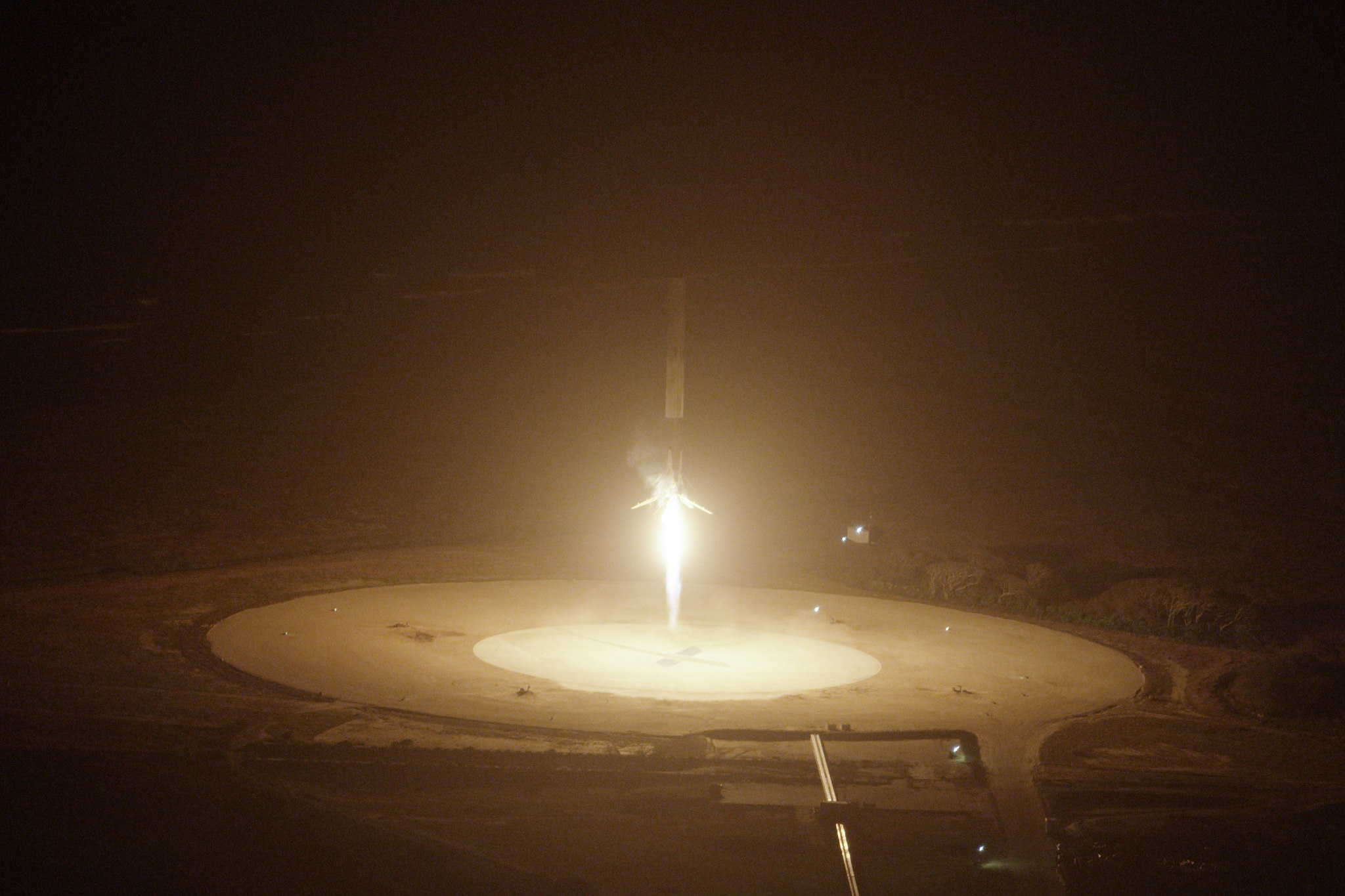
A crowd of employees and guests gathered at SpaceX’s Hawthorne, California, headquarters erupted in raucous cheers and applause, then launched into chants of “USA, USA.”
Musk said he watched from a point just outside SpaceX’s launch control center near the southern boundary of Cape Canaveral Air Force Station.
“The sonic boom reached me about the same time as the rocket touched down, so I actually thought at first that it had exploded, but it turned out just that the sonic boom almost exactly coincided with the touchdown point, so the sound reached me several seconds later,” Musk said. “So at first, I thought, ‘Well, at least we got close.’ But I went back into launch control, and there was this amazing view of the rocket still standing there on the landing zone. I can’t quite believe it.”
The Falcon 9 touchdown after Monday’s blastoff came after two tries earlier this year to land the booster on an ocean-going barge in the Atlantic Ocean. A Falcon 9 first stage crashed into the ship after a launch in January after it ran out of hydraulic steering fluid, and a booster tipped over after a softer touchdown on the platform in April, when the rocket came in with lateral motion SpaceX blamed on a stuck throttle valve in one of the engines.
The onshore landing target for Monday’s launch was bigger than SpaceX’s recovery barge, and it does not suffer from any bobbing and rocking caused by ocean waves.
SpaceX has eyed rocket recoveries since the company’s earliest launches a decade ago, first outfitting launchers with parachutes, then scheming to go for propulsive descents when that did not work.
Monday’s landing came less than a month after Blue Origin, another entrepreneurial space company that was founded by Amazon.com’s Jeff Bezos, retrieved a smaller rocket after launching on a suborbital flight just past the 62-mile (100-kilometer) boundary of space.
Blue Origin’s New Shepard booster became the first commercial vehicle to take off under its own power, fly into space and return to Earth, but its flight over Bezos’ West Texas ranch was purely experimental, and it did not reach the altitude and velocity attained by SpaceX’s rocket.
Bezos sent a congratulatory tweet to Musk late Monday, using the message to remind readers of his company’s feat last month, and repeating an argument he made to reporters in which he said the Falcon 9 and New Shepard landings are comparable because both boosters are technically suborbital.
Congrats @SpaceX on landing Falcon’s suborbital booster stage. Welcome to the club!
— Jeff Bezos (@JeffBezos) December 22, 2015
But Musk noted that Monday’s flight was an operational launch for SpaceX, a revenue-paying mission for Orbcomm, a New Jersey-based company which owns a fleet of low Earth orbit message relay satellites.
And SpaceX conducted its landing demo in public, while Blue Origin only revealed the results of its November test flight after it was completed.
“I do think it’s a revolutionary moment,” Musk said. “No one has ever brought a booster, an orbital-class booster, back intact. This is something that was actually a useful mission. It delivered 11 satellites to orbit, and then came back and landed. I think that’s perhaps the thing that’s really significant. We achieved the recovery of the rocket in a mission that actually deployed 11 satellites. This is a fundamental step change in technology compared to any other rocket that has ever flown.”
As roars of celebration rippled through SpaceX’s headquarters after the rocket landing, the 11 Orbcomm spacecraft — each about the size of a small refrigerator — began popping off mounting rings on the Falcon 9 second stage.
The satellites were completely separated about 20 minutes after liftoff, and Orbcomm CEO Marc Eisenberg confirmed all 11 spacecraft were communicating with ground controllers and in a good orbit.
The 11 commercial satellites, made by Sierra Nevada Corp., will join 34 other satellites in Orbcomm’s fleet to relay messages, track shipments and monitor maritime traffic for corporate clients.
The second stage’s vacuum-rated Merlin engine fired again after the satellite deployments to drive itself back into the atmosphere over the Indian Ocean, completing a test of the modified upper stage’s restart capability before multiple burns are required on future SpaceX launches.
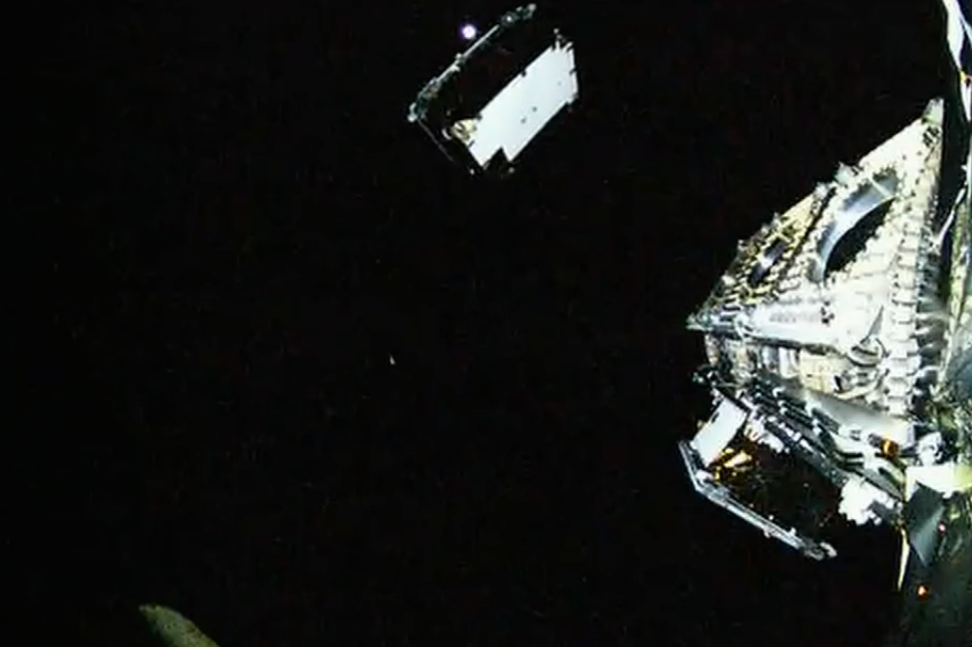
The Orbcomm mission gave SpaceX its 20th Falcon 9 launch — and 25th space launch overall. This year had seven Falcon 9 flights, including the failed mission in June that destroyed a Dragon supply ship heading for the International Space Station.
The Falcon 9 rocket did not fly for six months in the wake up the mishap, which SpaceX said was caused by a weak strut inside the second stage’s liquid oxygen tank. The bracket holding a high-pressure helium bottle broke in flight, rupturing the tank and the entire rocket.
A smooth resumption of Falcon 9 flights was crucial to SpaceX, which has a multibillion-dollar launch backlog, including a contract with NASA to launch its astronauts to the space station by the end of 2017.
Next up for the Falcon 9: Launch of a U.S.-French oceanography research satellite from Vandenberg Air Force Base in California on Jan. 17. That mission will fly on the last of the older-version Falcon 9s.
Monday’s return-to-flight launch proved out several upgrades to the Falcon 9 rocket, including Merlin 1D engines rated for higher thrust levels.
Each of the Falcon 9’s nine Merlin 1D engines, affixed to the base of the booster in an “octaweb” arrangement, generated 170,000 pounds of thrust at sea level. The engines collectively produced more than 1.5 million pounds of thrust, up from 1.3 million force-pounds on the previous Falcon 9 version.
A space-rated Merlin engine on the upper stage also gave more power, and it featured a lengthened nozzle and extended tanks. The interstage connecting the Falcon 9’s first and second stages is also changed to accommodate the new Merlin vacuum nozzle.
Another feature of the new-generation Falcon 9 is its use of condensed propellants, allowing engineers to load extra fuel into the rocket. Like earlier versions of the Falcon 9, the rocket consumes liquid oxygen and RP-1 fuel, a type of refined kerosene.
That works by chilling the liquid oxygen and RP-1 fuel mixture to colder temperatures, packing the propellant molecules closer together to free up room for additional fuel.
Musk said the densified liquid oxygen on the upgraded Falcon 9 is chilled to minus 340 degrees Fahrenheit, colder than typical launch-grade liquid oxygen at minus 298 degrees. The RP-1 fuel is stored at 20 degrees Fahrenheit, down from the room temperature 70-degree level more commonly used in rocketry.
As for the flown rocket now sitting at Cape Canaveral, Musk said it will likely be dedicated to ground testing to see how it fared on the trip to space and back. It will probably not fly again, but future boosters will be refurbished for multiple missions.
For missions with light payloads like the Orbcomm satellites, landings on the ground should be possible. Launches requiring a bigger boost from the rocket may have to aim for landings on the barge positioned in the ocean off SpaceX’s launch sites in Florida, California, and soon Texas.
“I think that we’re going to get quite a few rockets back, so I imagine we’re going to have a whole fleet of booster rockets accumulating quite rapidly because we’re building them right now at about one every three weeks,” Musk said.
Email the author.
Follow Stephen Clark on Twitter: @StephenClark1.

